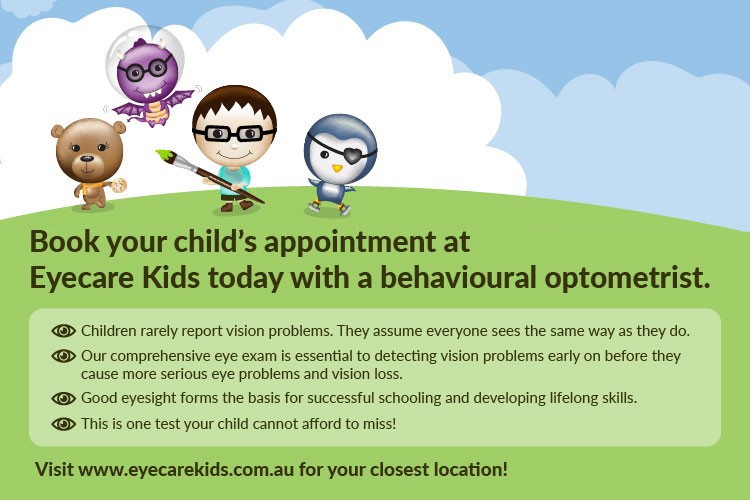Some of our optometrists recently attended the Brien Holden Vision Institute, Myopia Conference at UNSW. The day was to commemorate the life of Brien Holden. As one of the most influential optometrists of our generation, it was only fitting that his accomplishments and efforts be acknowledged through this outstanding day of education. Brien Holden’s vision was “Vision for Everyone… Everywhere”!
Here are some of the highlights that our optometrists, Hana Melligi, Tania Seligmann, Hie Rin Lee and Soo Jin Nam learnt from attending this conference in July, 2016
The prevalance of Myopia is rising
Myopia refers to short or near-sightedness. IRecent studies showed that more people are becoming myopic and the number is increasing fast worldwide including Australia (about 1 in 4 people in Australia, 1 in 3 in America and 1 in 2 in some Asian countries. According to WHO (World Health Organisation, half the world will be myopic by 2050, a scary statistic by anyone’s measure) http://www.brienholdenvision.org/research/projects/myopia-control.html).
What causes of high myopia?
The definition of high myopia by the WHO is the refractive error greater than -5.00DS. Both genetic and environmental factors are attributed to the development and progression of myopia. Children with both parents being myopic have higher risks. Increased time spending for near work (e.g. reading and computer works) is considered to be a significant factor.
Why are we concerned about high myopia?
As shown in the table below, high myopia increases the risks of potentially sight-threatening eye conditions like myopic macular degeneration, cataract, glaucoma and retinal detachment.
For instance, when compared with people who do not have any refractive errors, the risks of retinal detachment increase up to more than 21X s as myopia progresses. The risks of myopic macular degeneration significantly increase in high myopic patients (40.6X ) as well.
Increased risk of myopia comorbidities with increasing degree of myopia
| Cataract (PSCC) | Retinal Detachment | Myopic Maculopathy | |
| -1.00 to -3.00 | 2.1x | 3.1x | 2.2x |
| -3.00 to -6.00 | 3.1x | 9.0x | 9.7x |
| -6.00 to -8.00 | 5.5x | 21.5x | 40.6x |
(table from www.kategifford.com.au; Younan et al 2002, Ogawa & Tanaka 1988, Vongphanit et al 2002 in Flitcroft 2012)
How can we prevent the development of high myopia? Recommendations include:
- At least 90 minutes of outdoor time per day: Sunlight helps dopamine release which prevents axial growth of eyeball
- Prescription medication:
- Atropine 0.01% eye drop can reduce myopic progression (30-77%)
- Contact Lenses:
- OrthoK (Orthokeratology) is hard contact lenses that patients can wear overnight. It reshapes the cornea, front surface of the eye and hence, can reduce myopic progression (32-100%)
- Soft contact lenses (bifocal and multifocal) can reduce myopic progression (29-70%)
- Spectacles:
- Bifocals (executive bifocals) and progressive lenses are found to be effective for patients with specific binocular vision problems (esophoria and accommodative insufficiency) or genetic risk populations. They can reduce myopic progression (12-55%)
- Single vision distance glasses as well as normal hard (rigid gas permeable) and soft contact lenses have no effects in myopic control
Will under correction of myopia slow down the progression?
Clinical researchers concluded that under correction of myopia (+0.75 or 6/12) promotes myopia progression. It is best to avoid under correction.
Whilst our optometrists acknowledge this list is not at all exhaustive, it does indicate a lot of the work and progress our researchers have undertaken to understand the risk and factors of myopia progression. Our optometrists will continue to be updated and provide patients with the latest treatments on myopia control
References:
Outdoor activities: Rose et al 2008, Wu et al 2013, Lin et al 2014
Atropine 0.01%: Chia et al 2012, Chia et al 2016
OrthoK: Cho et al 2005, Walline et al 2009, Swarbrick et al 2011 ,Kakita et al 2011, Cho et al 2011, Charm et al 2011, Hiraoka et al 2012, Santodomingo-Rubido et al 2012, Charm & Cho 2013, Si et al 2015, Sun et al 2015
Soft contact lenses: Phillips & Anstice 2010, Holden et al 2010, Sankaridurg et al 2011,Cheng et al 2013, Walline et al 2013
Spectacles: Edwards et al 2002, Yang et al 2009, Gwiazda et al 2003, Cheng et al 2010, Sankaridurg et al 2010
No effects: Katz et al 2003, Walline et al 2004, Walline et al 2008
Under correction: Chung et al 2002

